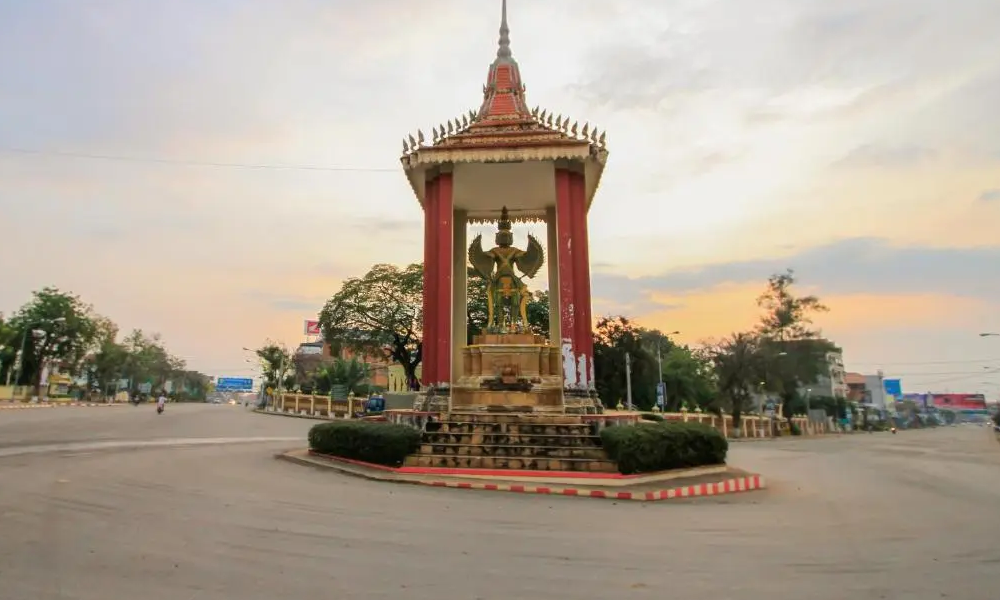Do More With RT Cambodia
DISCOVER THE BEST OF CAMBODIA WITH LOCAL EXPERTS
SPEND LESS - TRAVEL MORE WITH RT CAMBODIA TRAVEL
RT Cambodia Travel & Tour is a premier travel agency specializing in personalized guided tours to stunning locations like Siem Reap, Phnom Penh, Mondulkiri, the Mekong Delta, and Cambodia’s beautiful beaches. Our travel experts create custom itineraries tailored to your interests. Let us help you design a complimentary travel package for your next adventure!
Trending Destinations
Best Place To Visit In Cambodia
Eastern Cambodia
North-Western Cambodia
Cambdia Mekong Delta
Coastal Cambodia
Travel more, Spend less
Find Your Dream Destination
Enter your desired destination trip as keyword, filter the countries and tap search.
Book Your Dream Destination
Booking has been made simple by just entering your contact details and credentials.
Complete Checkout Process
Congratulations, you have successfully booked your dream destination.
Lets begin your dream adventure
Explore Kompong Phluk village and mangrove forest by boat
Popular Tour Activities
Adventure Tours
Beach Holiday Tours
City Tours
Things to Know
Capital City: Phnom Penh
Population: 16 million
Language: Khmer
Currency: Cambodia’s official currency is the riel (KHR). The US dollar is its secondary currency. ATMs dispense US dollars, and they are accepted everywhere, as long as they are newer bills in good condition. Small change will be returned in riel, as coins are not used. Prices may be quoted in either dollars or riel. Money can be changed at any bank. Be sure to have riel on hand when travelling to more rural regions, as the Cambodian riel is the primary currency used in the countryside.
The climate can generally be described as tropical. As the country is affected by monsoon, it is hot and humid with an average temperature around 27.C (80.F). There are two distinct seasons: the Rainy Season and the Dry Season. However, the Dry Season is divided into two sub-seasons, cool and hot.
These seasons are:
The Rainy season:
From June till October 27-35.C (80-95.f)
The Dry season (cool):
From November till February 17-27.C (80-95.F)
The Dry season (Hot) :
From March till May 29-38.C (84-100.F)
Most visitors to Cambodia are eligible for a visa on arrival at Siem Reap or Phnom Penh International Airports as well as at land border crossings between Thailand, Laos, or Vietnam. A tourist visa on arrival is valid for a single entry of 30 days, and a one-time extension is possible. Most nationalities are also eligible to apply for a tourist e-Visa. It may be easiest to apply for a visa ahead of time at a Cambodian embassy outside of the country to avoid any hassle or misunderstanding at the border.
Most ASEAN nationals can stay in Cambodia visa-free for 14 or 30 days. All visa applications require a passport with six months validity and an empty page, as well as two passport photos. As travel policies change regularly, please check the official government website for the latest regulations before visiting.
The language of Cambodia, Khmer, belongs to the Mon-Khmer family of languages. Khmer uses a phonetic alphabet with 33 consonants, 23 vowels, and 12 independent vowels. Visually, the Khmer alphabet is similar to the Thai and Lao, and many words in these three languages trace their origins to common Pali or Sanskrit roots.
One significant difference is that Khmer is not tonal. In tonal languages, such as Thai, Lao, and Vietnamese, the same sound has one meaning when spoken in a high tone, and a different meaning when spoken in a low tone.
Modern written Khmer can take two forms; an “oblique script” used for handwriting and most printed texts, and a “round script,” used for headings, titles, some religious texts, and other instances where certain words or phrases need to be emphasized.
Khmer writing begins on the top left of the page, and proceeds down and to the right. Cambodian writing does not use spaces between individual words; instead, spaces are used to denote the end of phrases or sentences.
The placement of the vowels in written Khmer can be confusing at first; vowels may follow or precede the consonants, or they may go above or below, or some combination of before, after, above, or below. The placement of each vowel can be seen in the graphic showing.
the 23 vowels. The light gray boxes indicate the placement of the consonants. Khmer also includes 12 “independent vowels,” which can exist without a preceding or trailing consonant. The independent vowels may be used as monosyllabic words, or as the initial syllables in longer words. Khmer words never begin with regular vowels; they can, however, begin with independent vowels.
An excellent resource for learning Khmer is available from the FSI Language Course Site. The FSI courses were created by the U.S. government for diplomats and other individuals in the Foreign Service. The materials are in the public domain, and volunteers are scanning the written materials and digitizing the accompanying audiotapes.
Thing To Do & Attractions of Cambodia
Want to know more?
If you’d like to find out more about Cambodia or contact one of our agents, we’d love to hear from you!

























